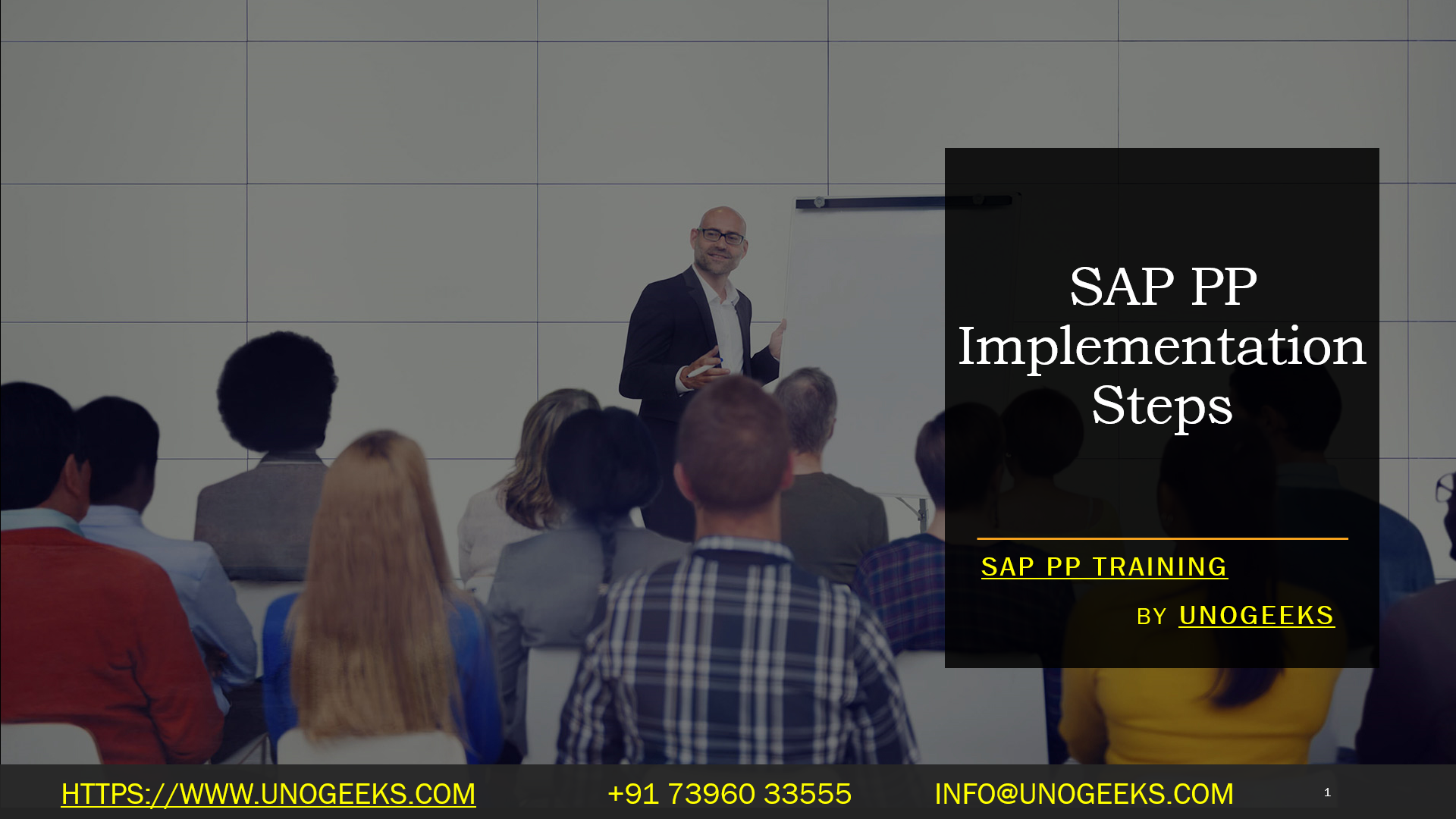SAP PP Implementation Steps
Streamlining Production: A Guide to SAP PP Implementation Steps
SAP PP, or Production Planning, is a core module of the SAP ERP system that empowers manufacturers to optimize their production processes. Implementing SAP PP effectively can significantly enhance efficiency, reduce costs, and improve overall visibility into production activities. However, navigating the implementation process can seem daunting with so many moving parts.
This blog will guide you through the critical stages of a successful SAP PP implementation, equipping you with a roadmap to streamline your production journey.
Phase 1: Project Preparation and Blueprinting
- Kick-off and Overview: Assemble your project team and stakeholders. Clearly define goals and expectations for the implementation.
- Business Process Analysis: Deep-dive into your existing production processes. Identify inefficiencies and opportunities for improvement.
- Organizational Structure Definition: Map your manufacturing plants, storage locations, and work centers within the SAP PP framework.
- Blueprinting: Document your production processes’ “to-be” state, outlining the desired functionalities within SAP PP.
Phase 2: System Configuration and Master Data Creation
- Master Data Creation: Establish core data elements in SAP PP, including bills of materials (BOMs), work centers, routings, and material masters.
- MRP Settings: Configure Material Requirements Planning (MRP) to optimize inventory levels and ensure timely material availability.
- Work Center Configuration: Define work centers, capacities, and control parameters for efficient shop floor management.
- Shop Floor Control Settings: Set up order types, confirmation parameters, and scheduling profiles to streamline production order creation and execution.
Phase 3: Integration, Testing, and Go-Live
- System Integration: Integrate SAP PP with other relevant modules, such as MM (Material Management) and SD (Sales & Distribution), for a holistic view of your operations.
- Testing and User Training: Rigorously test all functionalities to ensure smooth operation and train users on the new system and workflows.
- Cutover and Go-Live: Transition from your legacy system to SAP PP, ensuring minimal disruption to production activities.
- Post-Go-Live Support: Provide ongoing support to users and address any emerging issues.
Remember:
- Partner with an experienced SAP implementation consultant to guide you through the process and ensure optimal configuration for your specific needs.
- Focus on user training and change management to ensure user adoption and maximize the benefits of SAP PP.
- Continuously monitor and optimize your SAP PP system to maintain peak performance.
By following these steps and best practices, you can ensure a successful SAP PP implementation that empowers your manufacturing operations and propels your business toward greater efficiency and profitability.
Conclusion:
Unogeeks is the No.1 IT Training Institute for SAP PP Training. Anyone Disagree? Please drop in a comment
You can check out our other latest blogs on SAP PP here – SAP PP Blogs
You can check out our Best In Class SAP PP Details here – SAP PP Training
Follow & Connect with us:
———————————-
For Training inquiries:
Call/Whatsapp: +91 73960 33555
Mail us at: info@unogeeks.com
Our Website ➜ https://unogeeks.com
Follow us:
Instagram: https://www.instagram.com/unogeeks
Facebook:https://www.facebook.com/UnogeeksSoftwareTrainingInstitute
Twitter: https://twitter.com/unogeek
